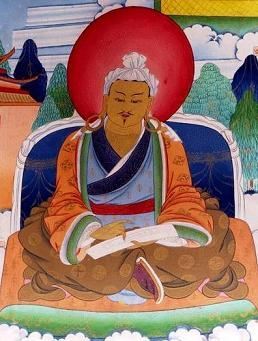Meanwhile, it is also interesting to have a look at the development of the writing system in Tibetan language in relation to the establishment of
The Tibetan Book of the Dead. Regardless to the legend of Padma-Sambhava, it is not difficult to make sure that there were strong interests for Buddhism in Tibet in those days and it is said that ‘During the 7th Century AD Songstem Gampo… (569-649AD), the 33rd king of the Yarlung Dynasty of southern Tibet and the first Emperor of Tibet, sent Thonmi Sambhota, one of his ministers, to India to gather information on Buddhism. The minister then reputedly devised a script for Tibetan…and also wrote a grammar of Tibetan based on Sanskrit grammars. The new Tibetan alphabet was used to write Tibetan translations of Buddhists texts. The first Sanskrit-Tibetan dictionary… appeared in the 9th century’ (
http://www.omniglot.com/writing/tibetan.htm).
Thus, it could be roughly said that during the 7th to 9th centuries, Tibetan people saw the rise in their interests on Buddhism in general and developed their own writing systems through learning and translating from works of Buddhism originally written in Sanskrit. In addition, in order to consider the historical background of the authorship of the
Book of the Dead, which belongs to the legend, it must be important to acknowledge that such early Tibetan literature contained a specific genre called ‘gter-ma’ that was categorised as rediscovered texts such as ‘reputedly the work of ancient masters which have been hidden in remote caves for many centuries’ (ibid).
 |
| Thonmi Sambhota |
For reading the text in full:
http://wrex2009.wordpress.com/2011/11/23/the-tibetan-book-of-the-dead-the-establishment-of-the-work/

No comments:
Post a Comment